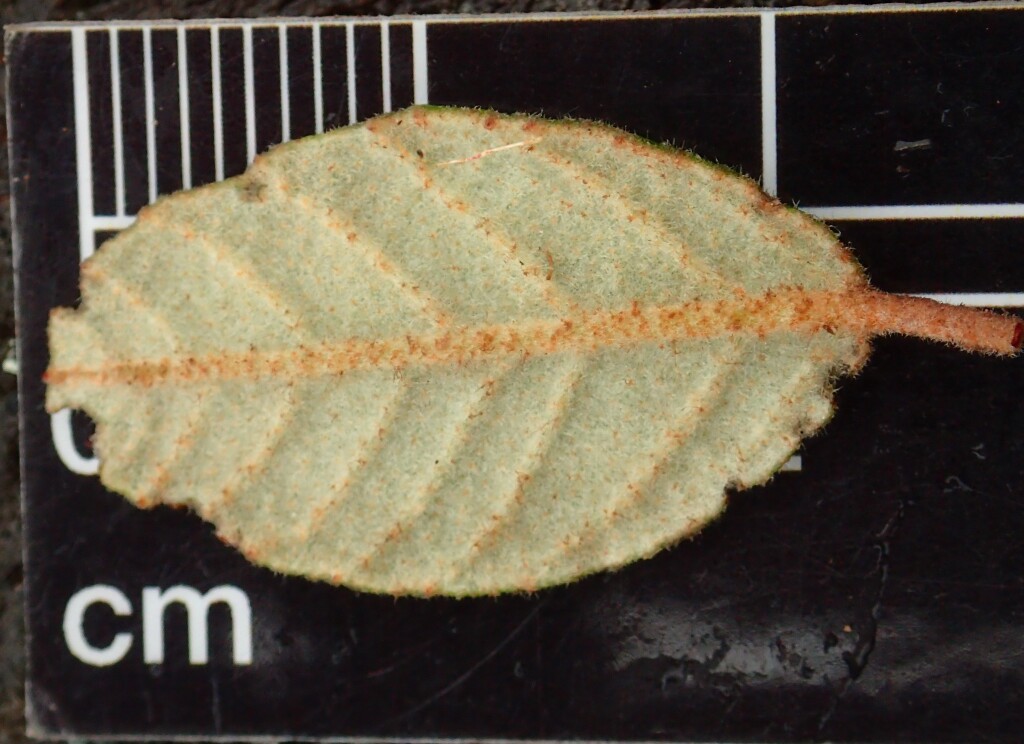Pomaderris betulina subsp. betulina
Shrub, 1–4 m high; branchlets densely pubescent with rusty stellate hairs. Leaves ovate to obovate, narrowly obovate or c. oblong, to 35(–60) mm long, 15(–20) mm wide, obtuse, margins usually strongly recurved, upper surface glabrous above or sparsely hispid with secondary veins strongly impressed, lower surface densely stellate-pubescent, greyish or rusty; stipules 1.5–3 mm long, deciduous. Panicles including 1–several compact subglobular clusters each c. 1 cm diam.; bracts persisting until anthesis. Flowers cream, externally pubescent to subvillous with pale stellate and longer pale to rusty simple hairs; pedicels 0–1 mm long (shorter than hypanthium); hypanthium 1–1.5 mm long; sepals 1.5–2 mm long, deciduous; ovary inferior, summit villous, style branched near middle. Operculum membranous, c. one-third to half mericarp length. Flowers Oct.–Nov.
NIS, EGL, EGU, HSF, HNF, MonT. Qld, NSW, Vic. Confined to dry, often rocky woodland and open-forests, on slopes or beside streams, and rather rare.
Unusually large-leaved plants (bracketed values in description) are locally common along the Genoa River near the New South Wales border. Pomaderris betulina subsp. actensis N.G.Walsh & F.Coates occurs in the Australian Capital Territory and nearby areas of New South Wales.
Walsh, N.G. (1999). Pomaderris. In: Walsh, N.G.; Entwisle, T.J., Flora of Victoria Vol. 4, Cornaceae to Asteraceae, pp. 85–109. Inkata Press, Melbourne.
 Spinning
Spinning

